


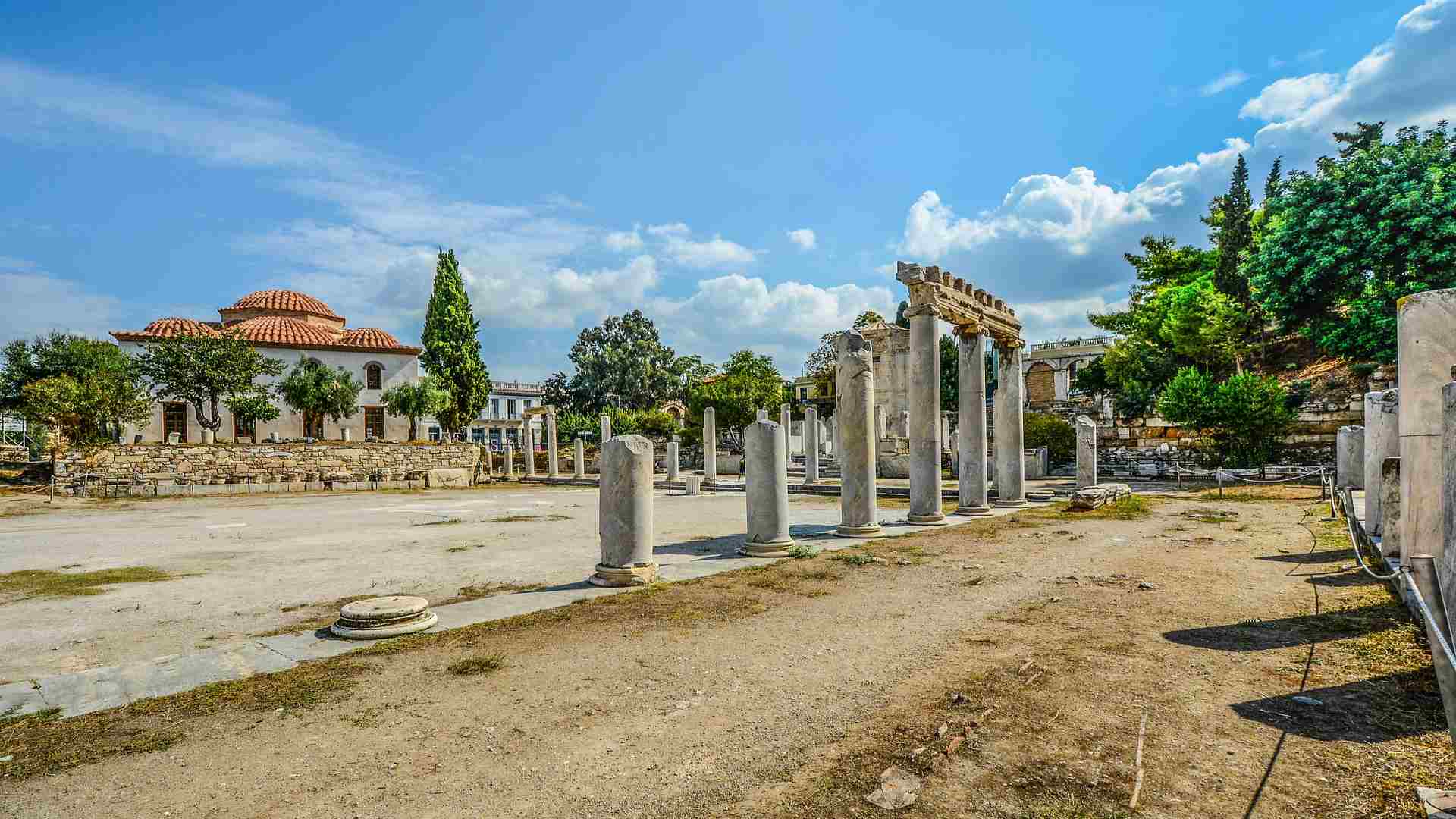
We Need Your Support!
We want to remind you that Athens by Locals is reader-supported. By booking tours, hotels, tickets, and other travel services through the links on our website, you can help us continue providing valuable content and information. Note that we receive a small commission only if you make a booking using our links at the time of your visit. So, if you're not quite ready to book yet, you can save this post and the links and return to make your booking when the time is right. We genuinely appreciate your support and are thrilled to have you in our travel community. Please don't hesitate to reach out if you have any questions or need assistance. Happy travels!
They say Athens is the eye of Greece, the mother of arts and eloquence. A key component that contributed a lot to this fame earned by Athens was the Roman Agora of Athens. The literal meaning of the word Agora is an assembly or gathering place.
As you can guess, these were the major central public places in most ancient Greek cities. Athens was no exception to this, with the Roman Agora being its most famed public place.
In this article, we are going to go down memory lane and learn a bit about the history of the ancient Roman Agora of Athens a must-see attraction for those that want to learn more about the ancient history of Athens and gain a deeper understanding of the city’s modern culture.
Contrary to the Ancient Agora, a gathering place meant for political debates among Athenians, the Roman Agora was an open marketplace.
It was constructed during the first century BC due to the benevolent contributions of none other than two of the most famous Roman Emperors: Julius Ceasar and Ceasar Augustus.
In its golden era, the Roman Agora featured a large courtyard with a fountain and public latrines surrounded by all kinds of shops.
Later on, when Hadrian took control of Athens, the Roman Agora was paved, and a large library was built, which would become known in later centuries as the Library of Hadrian and which is still one of its major attractions nowadays.
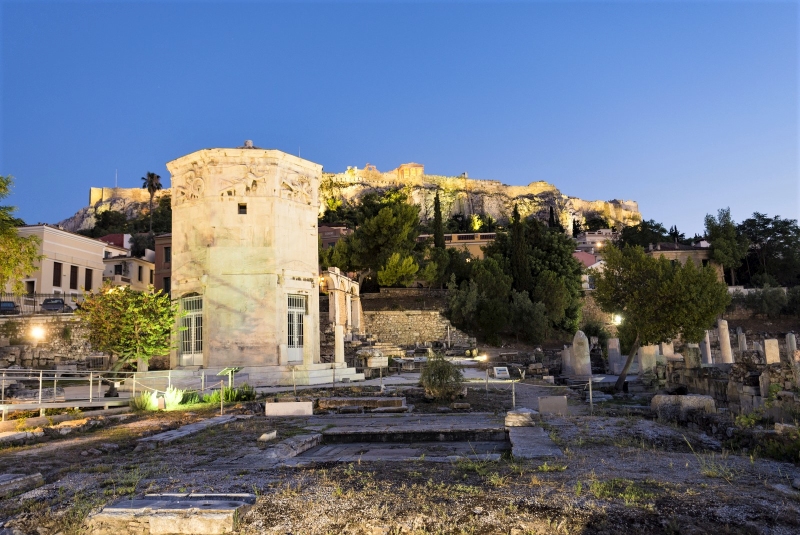
The Roman Agora soon became both a commercial and administrative center due to its location and historical significance.
Yet, the following centuries brought inventions by Venetians and Ottomans who gradually destroyed the agora and turned the site into a common residential area complete with houses, shops, and temples.
The Fethiye Mosque (or Fethiye Cami), still in the Roman Agora today, is one of the last remaining monuments of the site’s turbulent past.
The Roman Agora occupies a very significant location in the heart of Athens, between the imposing monuments of Acropolis Hill and the busy pedestrian streets around Monastiraki Square.
Though convenient for tourists, its location has posed some very peculiar problems to local urban planners.
In fact, the Roman Agora is probably the only archaeological site in the world that has train tracks running through it.
There are two entrances to the Roman Agora. The first lies on the western side, marked by the Gate of Athena Archegetis, a magnificent columned Doric gateway that was dedicated to Julius Caesar.
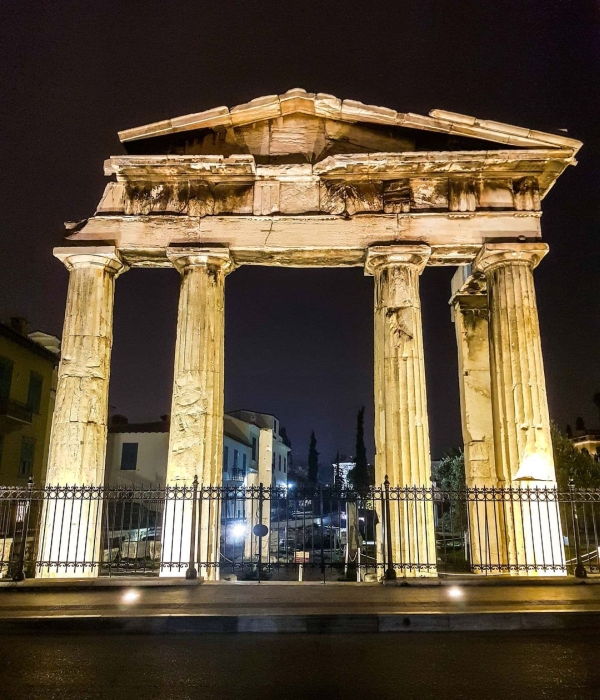
The other entrance is found next to the Tower of the Winds on the far end of the agora, next to Aiolou Street, right between Monastiraki and Plaka.
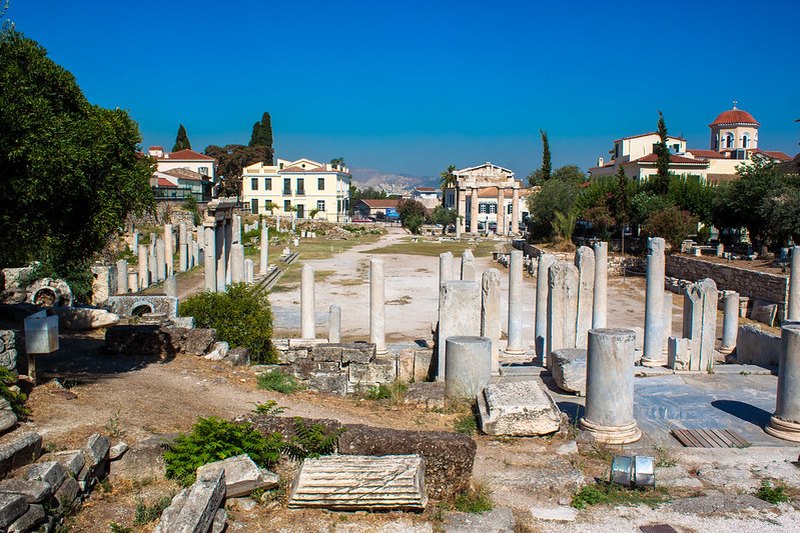
This isn’t an ordinary market. The Roman Agora of Athens is riddled with historically significant structures reflecting Athenians’ artistic intellect.
We mentioned the Gate of Athena Archegetis earlier, but there are some more fascinating sights in Roman Agora that you can’t afford to miss.
The Tower of the Winds, an elegant polygonal marble building, is probably the most famous building found in the Roman Agora.
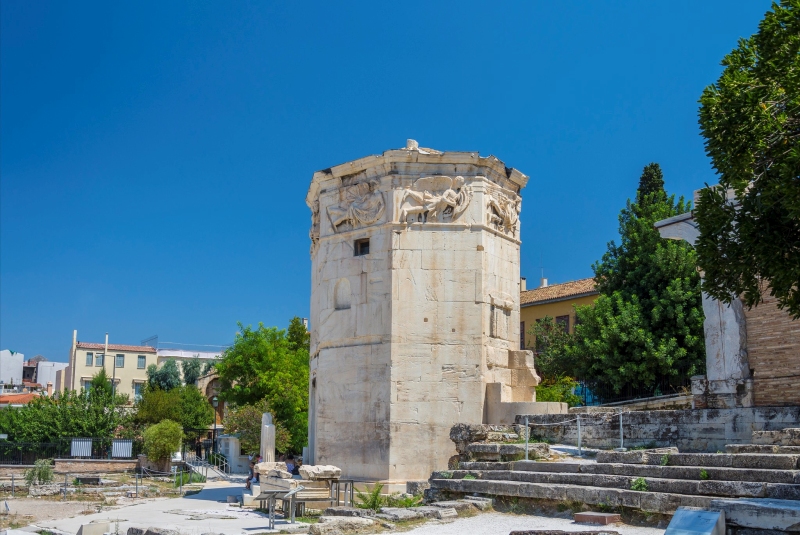
However, this isn’t just some ordinary marble tower. It is an eight-sided structure that serves as a water clock, a sundial, and a weather vane.
This magnificent structure was built by Andronicus of Cyrrhus, a Macedonian astronomer.
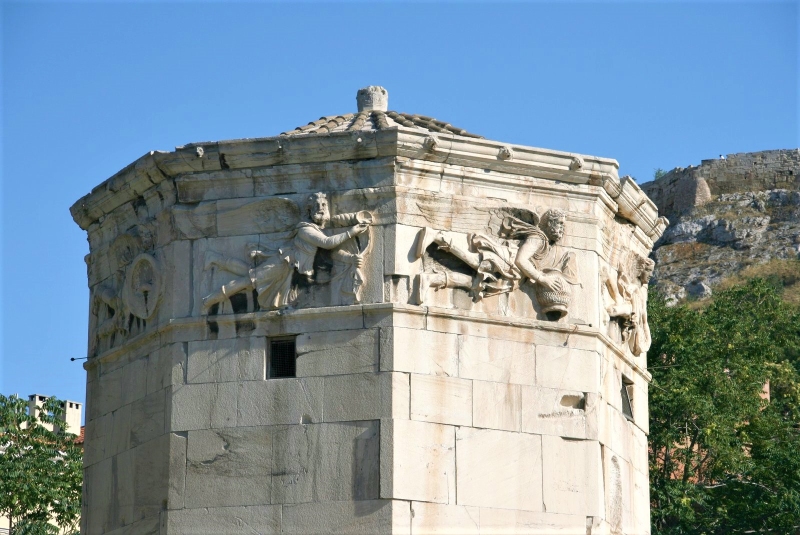
Apart from being a major tourist attraction in Athens, the Tower of the Winds is also a popular subject for painters who come from all over the world to admire and draw its shape on canvas.
Over the centuries, the Ottomans have used the famous tower as a hangout spot, a place for the Sufis to dance, and a chapel.
Then, there is the Fethiye Mosque, which sits on the northern side of Roman Agora. This Turkish mosque has witnessed some of the key historical events and has been a part of a few itself.

You can reach the Roman Agora in Athens in four ways.
These include:
The simplest and cheapest way to get there is by metro. Just get off at the Monastiraki station (green and blue line) and you’ll be just a few minutes away from the entrance.
Alternatively, you can easily get to the Roman Agora on foot from anywhere in the city center. Note that there are also buses that can take you to Monastiraki Square, but we highly recommend taking the metro since the traffic on the streets around Monastiraki tends to be heavy, especially during summertime.
If you like to know more, read our detailed guide about how to get around Athens.
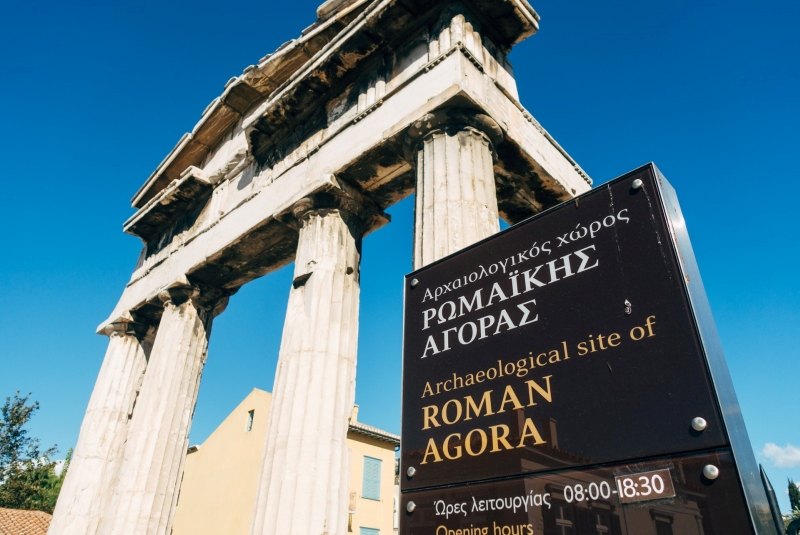
In winter, the opening hours are 8:30 am to 3:00 pm. However, the Roman Agora is open for visitors from 8:00 am to 7:30 pm in summer.
The fee for entering the Roman Agora varies depending on the time of the year. During the summer months, from April to October, it costs 8€ to enter. From November to March, the entrance fee is lower in the winter months at 4€. If you are eligible for reduced admission, the cost would also be 4€.
With just one ticket, you can visit not only the Roman Agora but six more major archeological sites as well, like the archaeological site of Kerameikos, the Theatre of Dionysus, the Temple of Olympian Zeus, and many more.
There is a free entrance for minors with a certified ID at the time of the visit.
The mystique nature associated with the ancient Roman agora can get you hooked at first sight. Find a budget-friendly place to stay through Booking.com, and then visit this shrine of Greek secrets with a mindset to learn more about ancient Athens.
The Roman Agora of Athens is an attraction you definitely can’t miss if you want to dig deeper into the city’s past.
Its location makes it ideal for a few hours of sightseeing before continuing your walk through the city center of Athens and discovering all its other treasures.
A Quick Reminder:
Remember that Athens By Locals is here to guide you with planning the perfect trip to Athens and help you every step along the way. If you didn’t found what you’re looking for, or need any recommendations about your trip to Athens, feel free to contact us and we will do our best to help you. Please be as more detailed as possible regarding your subject so as to help you better.
If you like what you read please scroll down at the end of this page and subscribe to Athens By Locals so next time to receive more articles like this straight forward to your email. Join us on Facebook for comments, photos, and other fun stuff. If you enjoy this article please share it with your friends on Facebook.
Copyright © 2024 Athens By Locals © All rights reserved. No part of this site may be reproduced without our written permission.
Images owned by Athens By Locals. Image Banks or Companies promoted.